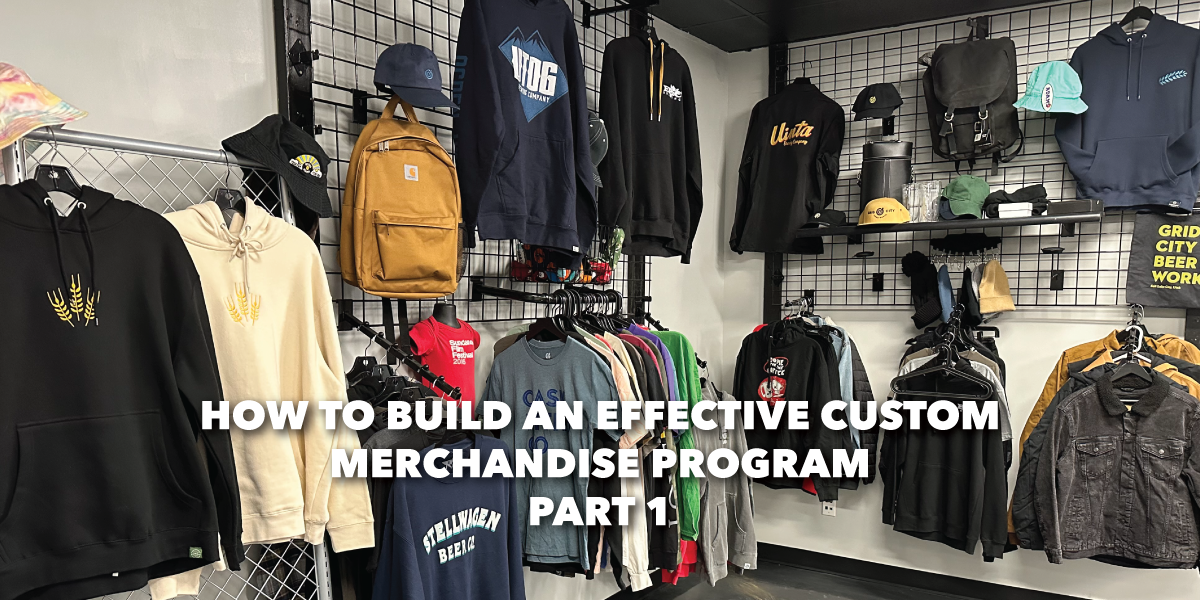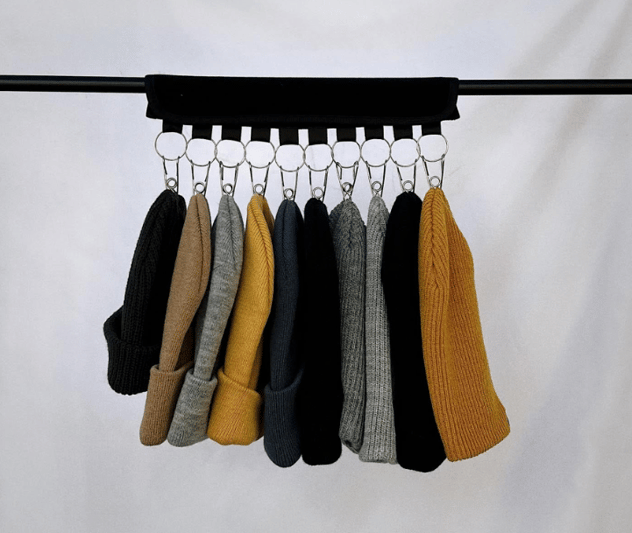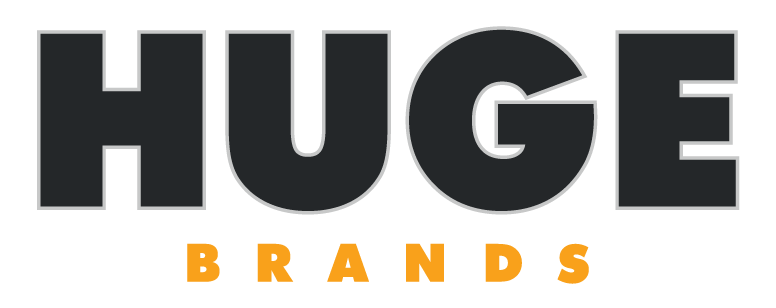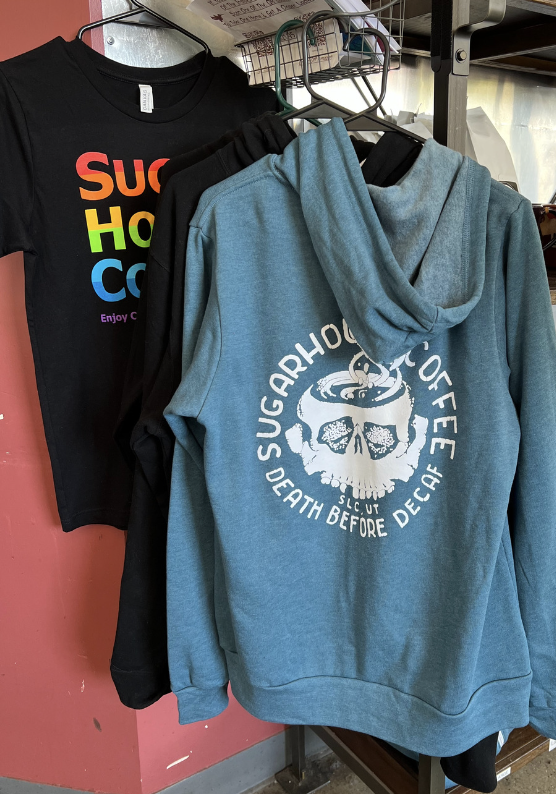What is an Effective Brand Merch Program?

Remember the game Mad Libs?
When I was growing up, my family would always buy a book of Mad Libs from Barnes and Noble and take it with us on a road trip. We would amuse ourselves as we drove through the Sonora Desert on our way to California, filling in the blanks of the Mad Lib, coming up with many random words that resulted in a crazy story when we finished the page.
Mad Libs might be a fun game, but playing Mad Libs is not an effective brand merch strategy.
Many businesses shoot from the hip when implementing their corporate merch strategy. They might buy swag or hand out cheap giveaways that their employees wear to Home Depot on Sunday instead of developing a comprehensive and intentional strategy for their brand merch.
Are you playing a game of mad libs with your brand merch strategy?
This happens too often with branded merchandise solutions. Many companies will:
- Buy swag from an inexpensive promotional products company
- Not charge the correct prices for their brand merch
- Work with a branded merchandise company that doesn't help them build a robust brand merch program
- Work with a branded merchandise company that is limited in their offerings or doesn't use quality blanks
- Not implement a branded merchandise strategy as part of an overall brand promotion strategy
How Do I Know If My Brand Merch Strategy is Unsuccessful?
Are you "mad libbing" it with your brand merch program? If you have ever heard the following from your customers, there is a good chance that you are creating a mad lib scenario with your branded merchandise solutions:
Customer: I wish you offered ________________, but you don't have it.
Customer: I want to buy your _________________ but I didn't see it in your store because it was displayed ____________________.
Customer: I usually only wear your shirt when I mow my lawn because the quality is _________________.
You: I just bought swag like ______________ from an inexpensive promotional good company that makes ______________ and it doesn't look like what I envisioned because of _____________.
You: I'm afraid to invest time and resources into a merchandise or promotional goods program because ________________.
You: I'm worried that my customers won't spend money on my merchandise or goods because _________________.
It might seem hard to grow your branded merchandise solutions, especially if your past efforts have been unsuccessful, but it doesn't have to be as difficult.
With an effective strategy in place, you can build a brand merch program with intention, and with the full confidence of knowing that your merchandise will:
- Generate a profit
- Be loved by your customers
- Improve the visibility of your brand and the strength of your brand promotion strategy
We'll show you how to build an effective custom brand merch program.

Understanding the differences between a brand merch program and buying swag
Before we start, it's very important that you understand the difference between a brand merch program/promotional merchandise program done with intention and buying cheap swag or promotional giveaways.
What are swag and cheap promotional goods?
There is a canyon sized gap between the cheap, one-size-fits-all promotional goods/swag industry and building a brand merch program with intention.
The swag and promotional goods, also referred to as the print-on-demand, industry has a market value of $6.5 billion as of 2022, and this number is expected to skyrocket by 2030. These high numbers indicate that many companies want to buy swag and don't have an intentional brand merch strategy.
In other words, these companies just buy swag and hand it out because that's what they have been taught to do, are unsure of what to buy, or don't know about leveraging the power of a brand merch program.
Swag and cheap promotional goods are (often) items that businesses hand out for free at conferences, to employees, and to customers. If they are sold to customers, it's typically not done as part of a strategic retail brand merch program.
- When companies buy swag, these goods are often produced by uploading a logo or image to the company's website, and they are printed on demand.
- Print-on-demand companies often have limited print capabilities.
- Their websites are easy-to-use and convenient-- typically you just have to choose a product and upload your concept logo-- but with this convenience comes a sacrifice in the quality and capabilities of the finished print. For example, if you want different types of t-shirt printing (i.e. multiple print areas, custom design, etc.) you are often limited to a single print area
- Print-on-demand companies employ a one-size-fits all strategy that doesn't cater to your brand promotion strategy. If you are tasked with buying swag, it can be difficult to know which product to select, and if it's the right one for your brand.
What is a brand merch program?
A brand merch program refers to the strategy, creation, development, pricing, display, and positioning of retail-quality brand merch. A strategic merchandise program is significantly different than handing out print-on-demand goods for free or swag items as giveaways.
If you want to build a brand merch or corporate merch program, it's vital that you are aware of the elements that make it successful.
Note: In the next post our brand merch series, you will learn how to implement these elements.
The elements of a successful corporate merch program
The element of a brand merch program work together like the gears of a clock; every part is intricately connected and rely on the others to work successfully.
The following elements are indispensable to a functional, robust, and high-performing retail merchandise program:
Strategy
Strategy refers to the overall vision and execution of a brand merch or corporate merch program. An effective strategy is the glue that holds your entire program together. If you don't have a strategy in place, you won't have a proper understanding of what your brand merch to accomplish, how it is performing, or how to measure success.
The main purposes of your program are to promote your brand, foster customer loyalty, and generate revenue. Without a strategy in place, it's hard to know what you are accomplishing (if anything). How you structure your strategy, will determine how you execute on every other element in your retail merch program.
Here are the questions you need to ask yourself when creating a merchandising strategy:
- What merchandise will I sell to my customers?
- How will I integrate brand merch into my overall brand promotion strategy?
- How will I display my brand merch?
- How will my merch look (i.e. what designs, logo concepts, blanks, inks, and retail quality finishes will I use such as hem tags, size tags, sleeve prints, etc.)?
- How much will I spend on my brand merch or corporate merch?
- What price will I offer my merchandise at?
- Which metrics will I use to determine if my merchandise program is successful (i.e. net profit margin, customer feedback, units sold, customer acquisition, etc.) ?
- How will you run and promote your program? Will you run it yourself or partner with somebody to run it for you?
If you haven't worked with branded merchandise company a merchandise program or know where to start, these questions might feel overwhelming or difficult to answer. For direction on where to begin, contact us and we'll help you get started!
Once you have your brand merch strategy in place, you will use it as the blueprint for your corporate merch program.
Creation and Development
The creation and development of a brand merch program is when you bring your vision to life. When you create your program, you should work with a branded merchandise company that takes the time to understand your brand. A branded merchandise company will ask you questions about your target audience, obtain artwork or help develop artwork such as logo concepts for your merchandise, and help you select the proper quantity of brand merch.
Once your merchandise is created and you have received it, you can start selling and promoting it to generate revenue.
Pricing
Revenue generation is the sine qua non of a retail merchandise program; if you're not making money then your brand merch program will quickly fall apart because you will lack the resources to invest in it, sustain it, and expand its reach.
A branded merchandise company understands this and work with brands to provide standardized pricing with proven results.
"When you work with a branded merchandise company that has knowledge of your industry and your respective demographic they can provide industry standard MSRP's to ensure that you maximize your profit margins. This ensures that the value of your products and brand promotion strategy is aligned with the value of your brand," Jeff Hacker, Sales Manager of Huge Brands, emphasizes.
Display
Have you ever visited Target or the Apple Store and taken time to admire how their stores feel? These retail environments aren't an accident; the intentional design that went into their displays has created a beloved shopping experience that is admired by countless brand loyalists around the world.
Your brand might not be as large as Target or Apple, but the right display of your brand merch is necessary for you to increase the sale of your merchandise.
All displays are different, they have common elements:
Visibility: If your corporate merch isn't visible, your customers won't see it and they won't buy it. Too often, businesses sale brand merch that is consigned to the back corner of their shop, where it is inaccessible to customers.
Accessibility: Your brand merch should be displayed and promoted so that your customers can easily find what they are looking for without having to dig through a pile or visit a rarely frequented portion of your store.
Scope and Reach: An effective brand merch program will offer something for everyone- embroidered hats, embroidered beanies, shirts, hoodies, stickers, drink ware, custom water bottles, etc.
Positioning
Positioning overlaps with display, but is more about customer perception and how your brand is perceived. The positioning of your brand merch should be aligned with your brand promotion strategy, core values, and unique selling proposition. Simply put, brand merch is an extension of the overall experience your customers have with your brand
Conclusion
All of the elements described above are part of a comprehensive and cohesive custom brand merch program. Now that you have a better understanding of the differences in the scope and magnitude between handing out swag items and running a robust brand merchandise program or handing out quality promotional goods, in part two of our branded merchandise series, we'll provide a step-by-step guide on how to create your own brand merch program and apply this knowledge to your brand promotion strategy. Tune in to learn more!
Want help building your retail merchandise program from an experience branded merchandise company? Get in touch today!




